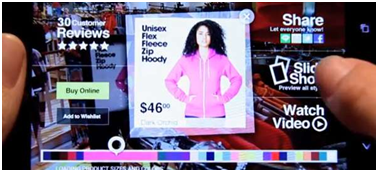Marketers must always look at innovation in delivering their messages. Banner ads are replaced by entertaining and informative video on the internet today. Intrusive traditional marketing has given way to content marketing over the period of time. However, people have become averse to even email marketing, social media and search engine advertising. Users do not want to see ads, they want content that is fresh and interesting.
In this blog we will look at how Augmented Reality or AR is transforming content marketing experiences. The application of augmented reality to deliver content is all set to change how we see marketing messages and interact with them.
What is Augmented Reality?
Augmented reality (AR) is superimposition of video, images, virtual objects onto the real world. AR came into the mainstream last year with the success of PokemonGo. The game unlocked the potential of AR for anyone with a smartphone in their hands.
Currently, all the tech giants and many startups are working on the potential to realize AR. There are more than 336 startups listed under the category on Anglelist. Research suggests that around 2.5 billion AR apps will be downloaded by end of this year. By 2021, mobile AR market alone is set to cross $83 billion in revenues (Source: Digi-capital).
Always the first to try out innovation, marketers are experimenting with the technology to bring novelty into the field. Customers love these experiences as they are new, cutting edge and entertaining. They give audience a memorable and meaningful experience they love to share with their friends. According to Content Marketing Institute, 71% of consumers think that a brand using VR and AR is forward thinking.
How are brands using Augmented Reality?
Brands are using AR for publicity campaigns or to display their products in a personalized and visual context. Check out the interactive AR campaign carried out by Visa in Poland.
Brands are also using AR to allow users to try on their products virtually. This gives users an immersive experience that is exciting as well as functional. IKEA takes the guesswork out of furniture shopping using its AR app. Users can check how a piece of furniture looks in their room before buying it thanks to IKEA Place app.
How is AR changing Content Marketing?
As you can imagine these experiences catch the attention of users worldwide and quickly become viral.
In Pepsi’s London AR campaign, a bus stop was modified to give the commuters unique experiences such as alien abduction and monster attacks. The campaign video went viral and got more than 50 million views across web! The campaign also reportedly led to a 30% increase in sales of single serving Pepsi bottles.
AR campaigns get huge publicity and which is great for content marketing. AR is not limited to just publicity campaigns and product apps, it is also changing how users are consuming content itself.
Many magazines and print ads are using AR interactive print to bring their content to life. Users can scan the ad to see a 3D model or video on their smartphones.
AR is already revolutionizing how content is consumed by in-store retail shoppers. Clothing retailer, American Apparel, has an AR app that allows shoppers to scan products and view its variants, reviews, inventory etc.
Future of Augmented Reality
AR will allow users to choose the format and context of content they want to see. AR is more promising than Virtual Reality (VR) for many companies. Unlike VR which takes users in an artificial world, AR allows brands to tell stories that adapt to the user’s reality while keeping him or her in context.
In future, we can also expect to see AR lens that do not even require a smartphone screen for AR. Scientists are working on eye lens that would project AR objects in our everyday reality. This can only be expected in a distant future though as we are far behind in terms of technology required for this.
Research team lead by Babak Parviz has already tested the lens on rabbits. “I mean, I don’t quite know what the timeline is going to be, but I give it a very, very high likelihood that they’re (AR lens) coming” says Babak Parviz, researcher on display lenses and former Google X director.
The early phase of AR will be used by content marketers to create exciting content as well as deliver usual content in new immersive ways. As the industry matures, expect to see AR as common medium of communication while more products such as AR arenas, apps, lens, etc., are launched to support AR experience.








